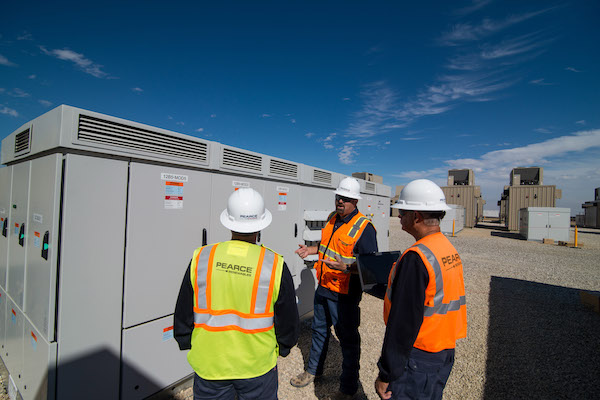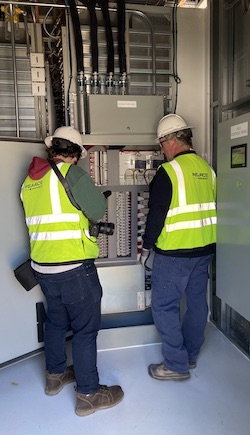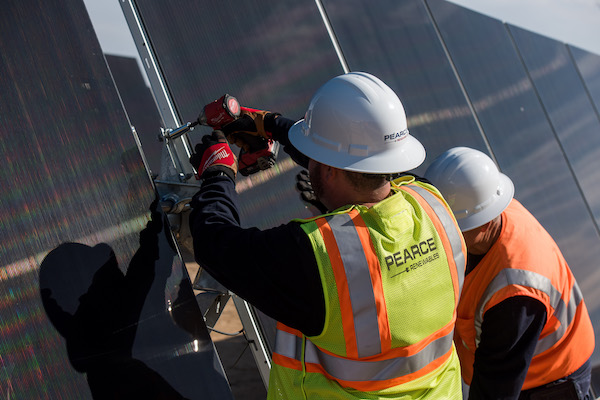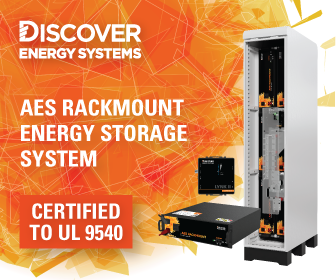5 Factors to Consider in When Choosing Your O&M Partner
Adhering to contractual uptime commitments amid O&M budget constraints is a contentious reality for all asset owners regardless of their field. As the demand for renewable energy continues to increase, the need for reliable operation and maintenance partners is growing with it. For many asset owners, outsourcing is the most effective choice, ensuring rapid response times and utilizing the most experienced technicians who can minimize asset downtime. For others with in-house capabilities, it’s a way to augment resources or meet specialized needs. Whatever the case, selecting a third-party service provider is a long-term strategic decision not to be taken lightly. Getting it wrong can be costly, even catastrophic.
Sophisticated asset owners know that uptime is determined by sending the right technician with the right tools and right parts in the minimal amount of time. Hourly price is the first factor on many asset owners' minds, but if a small saving in hourly rate results in a significant amount of inefficient additional billable hours, then maintenance costs can quickly spiral beyond budget. While price is important, it is not the only factor to consider. In fact, selecting an O&M partner based on price alone can be dangerous. Service level agreement (SLA) performance, national reach, scalability, safety, and supply chain reliability top the list of must-haves for many of the highest-performing asset owners, especially for nationwide portfolio owners.

What is a safety track record?
Anyone who’s spent more than five minutes on a critical infrastructure site understands the potential danger technicians face. The scope of the work they execute has potentially life-changing consequences if they fail to follow procedures, use the right tools, or wear the appropriate PPE.
The best-in-class owner operators and O&M service providers will begin every project, day, or meeting with a safety moment, putting safety front of mind for everyone. When choosing an O&M partner, it is important to look at the details: What is their total recordable incident rate and on how many field service hours per year is that measured? What is the Pareto of incidents and what type of incidents are occurring? Motor vehicle accidents, slips and trips, and technician’s personal health can be the most common safety incidents. What programs does the O&M partner have in place to reduce and mitigate these often-overlooked risks? Prevention is always the best approach, but how serious is your O&M partner taking it? Do they have a process for technicians to report risks and are they mitigated promptly before becoming an incident? Is the onboarding and refresher training sufficient to drive safer fieldwork?
Due diligence and time taken upfront to vet your O&M provider’s safety culture, program, procedures, and results can save a lot of headaches and liability later.
 SLA performance that ensures rapid root-cause analysis
SLA performance that ensures rapid root-cause analysis
Response times are a critical component of any O&M servicing partnership – and one that can be measured through service level agreement (SLA) performance. With so much at stake, a minimum threshold of 90 percent SLA may be the norm for shortlisting contending providers during the request for proposal process, but those with track records of 95 percent or higher certainly stand out.
SLAs for some service requests may reasonably be a few business days, while others require 24x7 availability with responses measured in minutes and hours. As renewable assets become a larger portion of North America’s generation capacity, and these assets' uptimes become critical, minutes matter. In major markets, the ability to respond in 90 minutes can be a distinct differentiator for response-centric providers. Many SLAs simply aren’t negotiable, especially when safety and catastrophic failures are at stake.
North American reach to meet regional demand
Working with an O&M provider with national or North America-wide coverage is critical to scalability. Consider the real-life scenario where a large EV charging charge-point operator needs to upgrade a critical component across their entire EV charger portfolio: Only an O&M provider with North America-wide reach could efficiently provide that service response due to the need to replicate the same scope of work, sometimes thousands of times, at charging stations in a wide variety of fleet and public settings.
Achieving scale quickly while maintaining quality and consistency requires a proven O&M partner with a strong portfolio of experience and skilled project managers to oversee training, quality, schedule, scope, cost, and reporting.
Dispatch is another area where nationwide service companies have the advantage over regional ones. One phone call and local technicians in multiple locations can be deployed seamlessly and simultaneously. Even for asset owners operating exclusively in smaller regional markets, O&Ms who can dispatch locally while operating nationally ensure the availability of technicians and parts no matter the local conditions.
Scalability to meet your growth demands.
Scalability in O&M servicing has multiple dimensions, starting with expanding in-field maintenance capacity to meet renewable energy industry demand. Once hired, technicians need to go through rigorous electrical, safety, and product-specific training to ensure they have the skills to do the work before getting to the field. Once onboarded, technicians then must go through regular refresher training to keep their skills and knowledge updated.
Imagine the servicing needs of a colossal 600 MWh energy storage project in the ERCOT region, where the need to de-risk the fragility of the Texas grid system has fast-tracked the transition to energy storage. The asset owner needs a multi-faceted team trained and deployed in just three months to provide the full spectrum of commissioning, preventative, and corrective maintenance services. This complex O&M servicing challenge is far too large to scale for many asset owners. A third-party service provider with a track record of scaling up regional teams will reduce the risk and establish effective operations from day one.
As the renewable energy boom continues, the ability to scale is especially critical in workforce development; the industry faces the daunting challenge of onboarding and training hundreds of thousands of O&M technicians to meet growth demands in just a few short years. The O&M providers that are positioned for success recognize their role in going beyond a labor-sub model, and instead provide technicians with a career path with industry-leading training.
Smaller O&M providers often don’t have the budget or resources to scale up teams of trained technicians to keep pace with the introduction of innovative new technologies and client-specific needs.
For asset owners with internal teams, the ebb and flow of a project’s design phase can be draining to an in-house O&M team, causing high turnover and lower quality of work execution. Scaling resources up and down based on demand often requires a hybrid in-house/outsourced response. Engaging with an O&M partner can optimize resources and control for surge demand.
Supply chain reliability
Increasingly, remote data insights into critical infrastructure provide troubleshooting and diagnosis with required spare parts bill-of-materials. This enables the field team to complete repairs in a ‘first truck roll’, and creates an alternative critical path that limits time-to-repair. With technicians ready to respond in minutes or hours, the next challenge is how to get the right parts into the technician's hands. Many critical infrastructure sites do not have the ability to store a full inventory of spare parts. Full spare parts inventories at every site can quickly balloon the company's balance sheet, not to mention create the procurement challenge of managing inventory obsolescence in a rapidly evolving industry.
Supply chain logistics quickly becomes a significant value. What good is it to rapidly deploy a technician on-site only to discover that they don’t have the parts on hand or the means to quickly access them to resolve a downtime issue? Implementing an inventory stocking, replenishment, and logistics solution is imperative in reducing the critical path to issue resolution. Having an O&M provider that can optimally manage inventory and expedite parts to any site can be a key to success when uptime is a KPI of your infrastructure.

Pulling it all together
O&M is often an afterthought to new critical infrastructure project planning, yet it often represents 20 years or more of an asset's life, and can result in expenditures significantly larger than the initial capital investment. Without a strong O&M strategy, critical infrastructure quickly runs into operating difficulties, leading to significant lost revenue. Given that outsourcing O&M is at least part of every operator’s strategy, choosing the right O&M partner based on safety, training, expertise, responsiveness, geographic coverage, reporting, and inventory management (in addition to hourly rate) are all factors to be considered.
Sully Speed is the VP of Product and Business Development and leads the Product Management and Business Development team for the Pearce Renewables Energy Storage, EV Charging, and O&M segments. He has more than 10 years of experience in the renewables market, and an intrinsic understanding of in-field reliability.
Pearce Renewables | www.pearce-renewables.com
Author: Sully Speed
Volume: 2024 January/February











